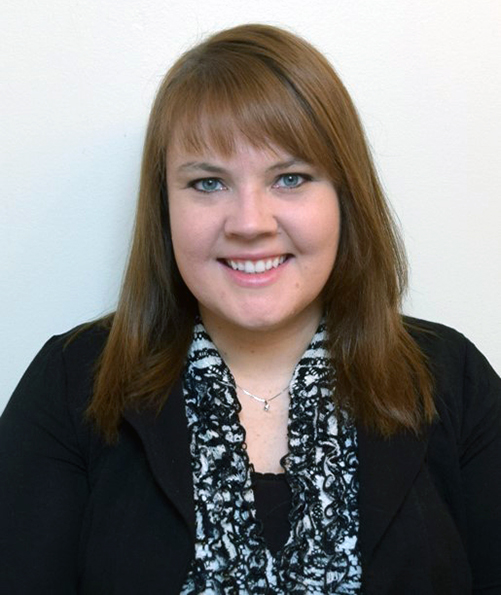Embodying excellence: Graduate student wins prestigious fellowship, fleshes out bone research
As part of The University of Akron’s sesquicentennial celebration — honoring 150 years of our people, place and promises — we are hosting a “Celebration of Academic Excellence” to highlight the history and future of our many academic disciplines.
Sharon Truesdell recalls that, as a child, she “would dissect toys and electronic equipment to determine their interworking mechanisms,” poking plastic bones and pulling rubber sinews.
Now a third-year doctoral student in The University of Akron’s Department of Biomedical Engineering, she’s still working with bones.

Sharon Truesdell
“In healthy individuals, the skeleton is routinely renewed by removing old or damaged bone and replacing it with new bone tissue,” she says. Disruptions in this “bone remodeling” process, as it is called, can cause diseases such as osteoporosis, which “occurs when more bone is removed than is replaced, resulting in a high degree of bone loss.” Unfortunately, “the exact mechanisms responsible for bone loss have yet to be fully understood.”
That’s why Truesdell is working with Dr. Marnie Saunders, acting dean of the Graduate School and associate professor of biomedical engineering at UA, to develop a “small, self-contained system,” or “lab-on-a-chip” device, that will recreate, in vitro, the mechanical environment of bone cells within the body, allowing Truesdell to investigate the multicellular interactions that regulate bone remodeling, which “could lead to the discoveries of new, potential targets for drug therapies,” she says.
NSF grant will support her research
So promising is this work that it’s being funded through the National Science Foundation’s Graduate Research Fellowship Program, one of the oldest and most prestigious graduate fellowships in the country, awarded to outstanding graduate students conducting research in STEM disciplines.
The fellowship, awarded to Truesdell in 2018, provides three years of funding, totaling $138,000, and opportunities to participate in international research through the Graduate Research Internship Program and the Graduate Research Opportunities Worldwide initiative.
“Osteoporosis is increasingly becoming a major health concern,” Truesdell says. “Within the United States, it affects more than 10 million adults, and that number will continue to rise with our aging population. My hope is that my research will help contribute to new therapies for a variety of bone diseases, such as osteoporosis, and potentially improve the quality of life for millions of Americans.”
Impressive faculty and research opportunities
Truesdell, a first-generation college student from Ashland, Ohio, who completed her bachelor’s degree in molecular genetics at The Ohio State University, says she was attracted to UA’s biomedical engineering program because she was “impressed by the research being performed by its faculty, as well as their dedication to student success.”
“Each faculty member is extremely knowledgeable in their areas of interest and are driving research and innovation forward,” she says. “Collectively, our faculty have secured millions of dollars of funding from sources such as the National Institutes of Health, the National Science Foundation, the American Heart Association, NASA, and the U.S. Department of Defense and Veterans Affairs. Our department has also established numerous collaborations with local hospitals to develop cutting-edge clinical applications. At the same time, the department offers a close-knit sense of community that enhances student success.”
Truesdell adds that she has “benefitted immensely” from working in Saunders’ Bone Biomechanics and Mechanobiology Lab.
“Personally, within Dr. Saunders’ lab, I have had the opportunity to contribute to several research projects that have so far led to my co-authoring seven peer-reviewed manuscripts and nine conference abstracts,” Truesdell says. “Further, I have had the opportunity to attend multiple national and local conferences and present my research during their poster sessions.”
Inspiring the next generation
The Graduate School has also given Truesdell the opportunity to continue mentoring and teaching students — a passion she discovered while working as an adjunct instructor at a community college before coming to UA.
“One of my most memorable experiences in the Graduate School so far has been the opportunity to develop and host a weeklong summer camp for middle school students,” she says. “I, along with my advisor and a fellow graduate student, created a biomimicry-themed camp for local sixth-graders that enabled students to incorporate art and creativity within a variety of hands-on STEM-based projects,” such as the construction of insect-inspired robots, and of solar-powered cars using everyday objects and 3D-printed components.
After graduating, Truesdell plans to pursue a career in academic research, continuing her work on bone remodeling and “teaching and inspiring the next generation of STEM students” — those dissectors of toys and gadgets who, in years to come, may further unravel the secrets of the human body.
